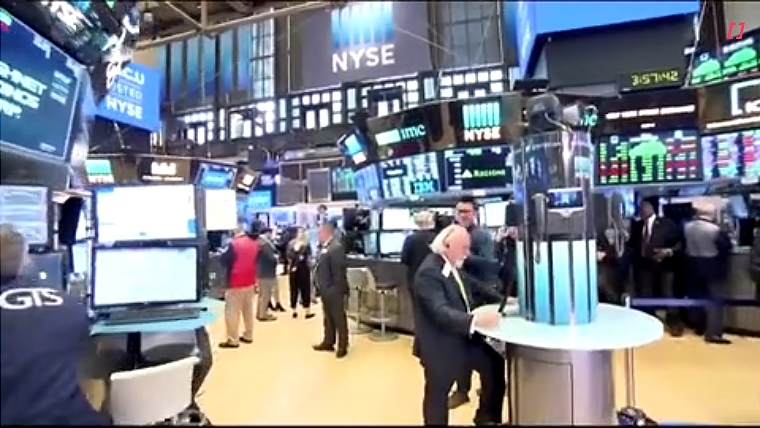
US equites are modestly weaker and US Treasury yields are lower, with risk sentiment weakening during the middle of the NY trading session. The 2-year Treasury rate is probing three-year lows while the 10-year rate has fallen below 4%. Currency movements have been modest, but commodity currencies have slightly underperformed overnight. The NZD trades at 0.5735 and NZD/AUD has sustained a lot of the gain seen in the wake of yesterday’s softer Australian employment report.
Risk off soured in the middle of the NY trading day. Earlier in the session a couple of regional US banks were under the spotlight after they disclosed problems with loans involving allegations of fraud. Angst grew later in the day as the market digested the news. The recent collapse of subprime auto lender Tricolour and auto parts supplier First Brands have investors wondering whether a pattern is developing.
After trading positively during the morning session, the S&P500 has spent the afternoon weaker and shows a modest fall. The risk-off vibe spilled over into the Treasuries market, where the 2-year rate fell as much as 8bps to 3.41%, its lowest level since 2022. Over the two remaining meetings, more than two full Fed rate cuts have been priced, meaning some chance that a 50bps cut emerges from either the October or December meeting. The 10-year rate fell to as low as 3.97% and currently sits at 3.98%, down 5bps for the day.
In a Bloomberg TV interview Fed Governor Waller argued for easing monetary policy at a gradual pace, “you don’t want to make a mistake, so the way to avoid that is to go cautiously or carefully and do 25, wait and see what happens, and then you can get a better idea of what to do”. This contrasts with Governor Miran’s view of some urgency to cut rates in 50bps increments. At another event, Waller advocated for a 25bps cut at the late October meeting, “but beyond that point, I will be looking for how the solid GDP data reconcile with the softening labour market”.
On the more hawkish side, Richmond Fed President Barkin said he remains sanguine on the outlook for both employment and inflation, adding that the underlying dynamics in the labour market are still quite strong. Kansas Fed President Schmid said “we’ve still got work” to do regarding bringing inflation down.
The US government shutdown means the dearth of official data continues. Without the retail sales report, analysts are trying to piece together what might have been recorded, with the general view that spending likely slowed in September based on credit card data and other private sector releases.
The NAHB housing market index was stronger than expected, rising 5pts off a low base to a six-month high of 37. The Philadelphia Fed business index fell by much more than expected, to a six-month low of -12.8 in October, from +23.2 in September, albeit it wasn’t all gloomy, with a lift in new orders. Price indexes moved higher and remained elevated.
UK monthly GDP figures were in line with expectations, with a 0.1% m/m lift in August following a 0.1% drop in July. A number of economists suggest that growth over Q3 will end up at 0.2% q/q, half the pace the BoE expected last month.
French PM Lecornu survived two no confidence votes in parliament proposed by opposing factions, and now the job of trying to put together a budget begins in earnest. Lecornu said he won’t use a constitutional provision to bypass a vote in parliament, so he’ll need wide ranging support to pass a budget.
In currency markets the worst performer over the past 24 hours has been the AUD, lurching down after a softer labour market report (see below). The risk off mood has seen commodity currencies struggle to perform overnight, although movements have been modest. The AUD has sustained a fall below 0.65. The NZD currently sits at 0.5735 and NZD/AUD is up 50pips post the employment report to 0.8830, with recent long positions placed on AUD/NZD cut after the report. The NZD is on the soft side compared to the other majors. NZD/EUR is holding its head just above 0.49.
The gain in Australian employment in September of 15k was slightly softer than expected but the real surprise was the two-tenths miss in the unemployment rate, which rose to 4.5%, its highest level in nearly four years. The data shocked the market into reconsidering the chance of another RBA rate cut later this year in either November or December. A full 25bps cut is now priced by the December meeting and the 3-year bond yield fell as much as 13bps.
NZ monthly CPI indicators for September were on the softer side of expectations, seeing BNZ Economics nudge down its Q3 CPI estimate a tenth to 0.9% q/q whilst leaving the annual figure at 3.0% y/y due to rounding. This estimate is now in line with the RBNZ’s August MPS, albeit the October MPR alluded to the chance of a print above 3%.
There was strong demand at the weekly NZGB bond tender for all lines on offer, even as global forces had reduced rates going into the event. The net impact was outperformance of NZGBs against swap. NZGB yields fell 1-5bps across the curve, with a flattening bias. The recent fall in ultra long rates below 5% didn’t suppress demand for the bonds, and the 30-year rate closed down 5bps at 4.90%. The 10-year NZGB fell 4bps to 4.0%, after dipping below 4% for the first time since early 2023. Swap rates fell 1-2bps across the curve to fresh cycle lows, with the 2-year rate closing at 2.48%.
In commodities, the risk off mood sent Brent crude down to a fresh 5-month low just above USD61. President Trump said he spoke to Putin in a long call, and they will meet in Budapest to discuss ending the Ukraine war. Gold continues to power on up and is on the verge of breaking up through USD4300 per ounce.
With the US government still shut down, there is nothing on the calendar with US official releases on the housing market and industrial production that were due being suspended.
Daily exchange rates
Select chart tabs
Jason Wong is the Senior Markets Strategist at BNZ Markets.

We welcome your comments below. If you are not already registered, please register to comment.
Remember we welcome robust, respectful and insightful debate. We don't welcome abusive or defamatory comments and will de-register those repeatedly making such comments. Our current comment policy is here.